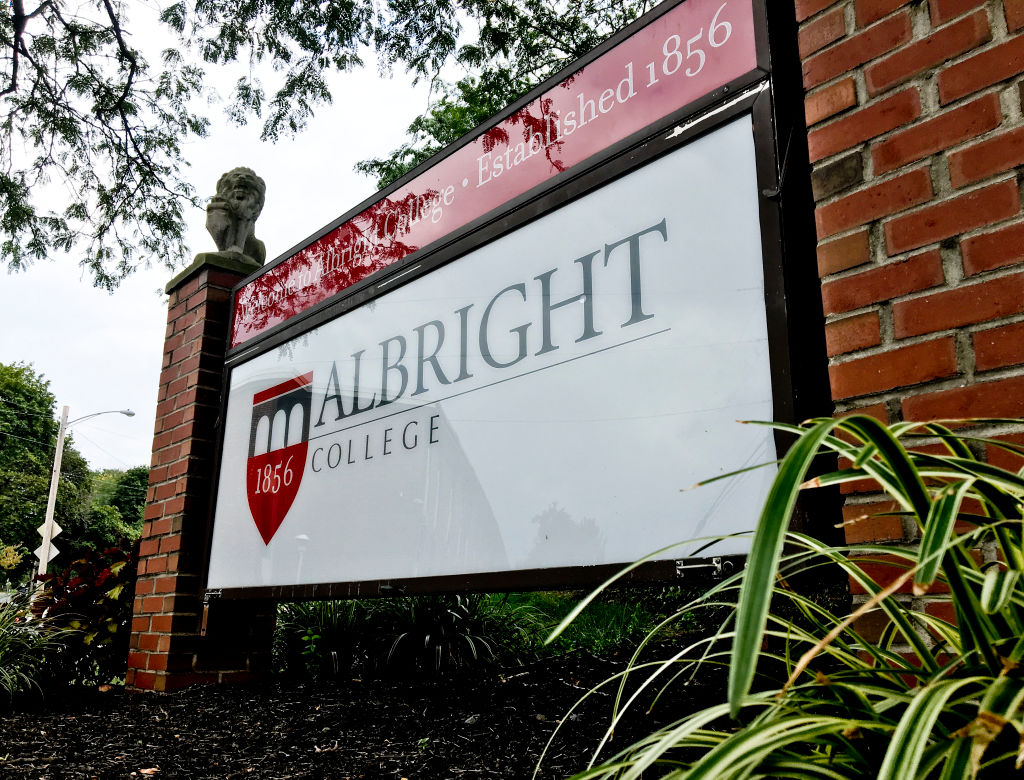A college in Pennsylvania is the latest in a long line of US universities to sell its art collection to balance its books. Albright College, a liberal arts institution in Reading, has put more than 500 works from its collection into an online sale with Pook & Pook Inc, an auction house in Downingtown, Pennsylvania.
The college follows the likes of Fisk University, Brandeis University, Valparaiso University, Randolph College, Rockford College, and Mills College in sending artwork to the auction block. Albright’s move has sparked outcry from some collectors who donated art to the college.
Titled “Fine Art from an East Coast Educational Institution,” the sale is slated for July 16 and comprises 524 lots. They include works by Bridget Riley, Jasper Johns, Romare Bearden, and Jacob Lawrence, while books and posters are also being sold.
James Gaddy, the vice-president for administration at Albright, told The Art Newspaper that “we needed to stop bleeding.” He confirmed that over the last two year, the college has racked up a $20 million deficit. Gaddy referred to both himself and the Albright’s president, Debra Townsley, as “turn-around specialists,” adding that the college’s 2,300-strong art collection was “not core to our mission” to educate, and cost more than the value of the art.
Lynn Pasquerella, president of the American Association of Colleges and Universities, told TAN that colleges and universities have been selling their artwork to raise funds “for a number of years now, and we’ve certainly seen an escalation in the past few years.”
Gaddy said the value of the works in the online auction “is not extraordinary,” and estimated their value at $200,000. He added that the overheads of the gallery where the art was displayed surpassed $500,000 a year.
Given the state of Albright’s finances, the sale of the works is not expected to make much difference. The college has laid off more than 50 salaried staffers, about 20 percent of the college’s total workforce, which has saved it $1.7 million each month in operating costs. Albright has also sold properties that are “mot contiguous with the campus,” Gaddy explained. These include an apartment complex. Gaddy told TAN that there are plans to increase the current enrolment of 1,100 students to 1,600 in the next five years, which is the same number students the college has before COVID.
Since Donald Trump walked into the White House for the second time at the beginning of this year, his administration has slashed higher education funding. In June, the Republican government outlined its vision to wind down the US Department of Education. The budget proposal for fiscal year 2026 calls for a 15 percent funding cut, and several changes to higher education programs.
In Pennsylvania alone, at least 10 institutions have closed over the last decade due to fiscal crises. They include Rosemont College, the University of the Arts in Philadelphia, and Pittsburgh Technical College. Since 2016, 126 education institutions have been forced to merge to survive, according to Higher Ed Dive.
Phillip Earenfight, a board member of the Association of Academic Museums and Galleries (AAMG) and ex-museum director and art history professor at Dickinson College, told TAN that “Pennsylvania suffers from too much competition in the academic profession.”
“They can’t all attract enough students. They are competing in an environment in which they cannot all survive,” he said.
Albright’s collection was built from several sources, but the majority came from the late New York-based art dealer Alex Rosenberg and the late Doris C. Freeman, the first director of New York’s Public Art Fund. The works were housed in the college’s Doris C. Freedman Gallery, and it was the intention of Freedman to “create a space where the arts would flourish—a space for students and the community to engage with the arts,” according to a letter sent by the donor’s three daughters (Susan, Karen, and Nina) to the college’s legal counsel, Courtney Schultz. They added that “Albright’s decision to monetise the art collection of the Freedman Gallery is both shortsighted and counterproductive. The sale of these treasures can do nothing meaningful to mitigate Albright’s $20 million debt.”
The letter asks Albright to reconsider selling the collection. If it does go ahead with the auction, in the letter the three daughters said they “will explore our alternatives.”
Related Articles


